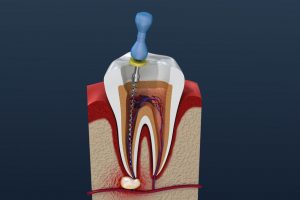
Root canal therapy is a surgical treatment process for an infected tooth that is designed to help the dentist to achieve the removal of the damaged pulp and the prevention of future infection in the impacted tooth. In addition to helping the dentist prevent infection, it helps patients with a decaying tooth and an infected gum improve oral hygiene by preventing the growth of bacteria in the mouth.
There are many reasons why someone would undergo root canal therapy
The most common reason people experience the treatment is to treat a decaying tooth or infected gums. It is also used to treat an abscessed tooth.
Root canals are often recommended for patients with poor oral health and caries. The root canal is used to relieve pressure on teeth and bones and prevent serious diseases such as tooth decay. Several different types of root canals are available today. The type and depth of treatment needed can largely depend on how badly the tooth is infected.
The most common type of root canal used today are dental implants. Patients are placed in the postoperative recovery area under anesthesia. They are then given local or general anesthesia. They are then allowed to recover and allowed to eat food.
When a patient develops an abscessed tooth, a root canal may be required to remove the infection. An abscess tooth is a tooth in which it is infected, resulting in formation around the affected tooth and surrounding tissue.
After the abscessed tooth has been processed and cleaned, the root canal is processed. It is used to relieve pressure on bones and nerve roots, and to prevent bacteria and plaque from moving back and forth through the affected area. The root canal also serves to protect the gums and jaw from re-damage.

Root canals can also be used for patients who have cavities. In this case, the procedure is used to help to alleviate the pain associated with teeth decay
Cavity teeth need to be treated in order to prevent infection and to maintain good oral hygiene. Once the cavity has healed and decayed, it is left untreated in order to prevent any future cavity from occurring. The root canal treatment to heal the existing cavity is called a root canal.
Many times, an abscessed tooth will need to be removed in order to ensure proper healing and to prevent any further infection after the root canal therapy has begun. There are several different types of anesthetic that are used in the treatment process of removing an abscessed tooth.
Local anesthesia is used to provide patients with some relief during the treatment process. It is generally injected into the wound and does not require surgery to be performed.
General anesthesia, while it is a little more painful than local anesthesia is commonly used for patients who are in more severe cases. General anesthesia is administered via an IV. and it is injected directly into the affected area.
The length of time that a procedure takes is also going to depend upon the amount of bone and nerve damage that needs to be repaired. This depends on the severity of the condition that is affecting the bone and nerve. The longer the procedure is performed, the greater the risk of bone and nerve damage.
While this procedure may seem to be painful, it is considered to be much safer than other types of surgical procedures. It is a much gentler treatment method that can be used to restore oral health and prevent the need for more complicated procedures in the future.
